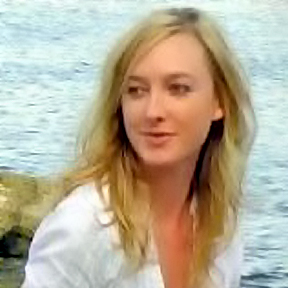
If we want to end bullying and raise a generation capable of resolving conflicts without resorting to violence, I believe we must expose children to the idea of peace, and teach them how they can make peace a reality in their lives and actions.
1. What led you to the mission of being Director, Gateway to Peace Museum?
I came to the Peace Museum in a roundabout way. I studied philosophy in college, and that lead me to an interest in theory surrounding social and political equality, along with equality of opportunities and economic participation. I was especially concerned with global inequality. This led me to pursue a Master’s degree in International Development, which I combined with an emphasis in Human Rights.
While working on that degree, I interned with several wonderful organizations in Denver, CO – the Denver Justice and Peace Committee, which focused on social and political justice issues in Central America, and The African Community Center, a refugee resettlement agency which assisted refugees from around the world with building new lives in Denver. In the end, The African Community Center hired me as soon as I finished my degree, and I spent the next few years managing an educational program that provided job skills training, ESL classes and personal and family support to refugees who had entered the TANF (welfare) system.
Many of the individuals in my program came from long-term refugee camp situations, and most were survivors of profound war trauma. The stories those men and women shared with me – many concerning rape, the murders of their loved ones and their near escapes from insurgent raiding parties – are forever ingrained in my memory. Still, I felt privileged that they chose to share their experiences with me and it permanently altered my awareness of violence in the world, and its effects on both the perpetrators and the victims. I also became acutely aware of the causality between inequality and violence.
When I decided to move back home to St. Louis (after 10 years in Denver), I knew I wanted to continue working in the human rights field, and I knew I wanted to be an advocate in the peace-making community, but I wasn’t sure how. I came across the Peace Museum on an internet search, and it seemed perfect! As Gandhi taught us, “if we want to reach real peace in the world, we will have to begin with the children.” Where better to begin than with the children of the nation with the most resources and arguably the greatest influence in the world today?
2. What does this mission mean to you?
I see the Peace Museum as one piece of a much larger movement toward peace education in our schools. “Character education”, “anti-bullying” and “conflict resolution” are all hot topics in our schools these days, and rightly so. Still, I feel that many mainstream non-violence programs are missing one key theme when they talk about ending violence and bullying…PEACE! As Dr. Martin Luther King Jr. believed, the opposite of violence is not non-violence; the opposite of violence is peace. Non-violence is the tool we use to achieve peace. Therefore, if we want to end bullying and raise a generation capable of resolving conflicts without resorting to violence, I believe we must expose children to the idea of peace, and teach them how they can make peace a reality in their lives and actions.
3. What was your best day as Director, Gateway to Peace Museum?
I have many great days at the Peace Museum, but I have to say that my favorite moments are when I get hugs from the children with whom I work. Lucky for me, that happens all the time!
4. What was your worst day as Director, Gateway to Peace Museum?
I think my most disappointing days have been when we’ve been rejected for a grant, or for other similar funding. It always boggles my mind that not everyone sees the value of peace education! I have to remind myself that there are many other equally worthy and important programs out there, and if the money isn’t coming to the Peace Museum, it’s going to someone else that is also doing great work. I also have to remind myself that we have received such generous support from other foundations (and from so many individuals and schools, too!)
5. How have you been able to continue your mission – in spite of this worse day?
I think when you work in the non-profit world, you have to learn to brush off rejection. The fact that our program has grown so popular with schools and other community groups (we are booked solid until the end of the school year) is all the affirmation I need. There have been so many “yes” and “thank you” and “we love what you do” for us, that I think we can handle a “no.”
- « Previous person: Florence Kramer
- » Next person: Lina Chergibayeva